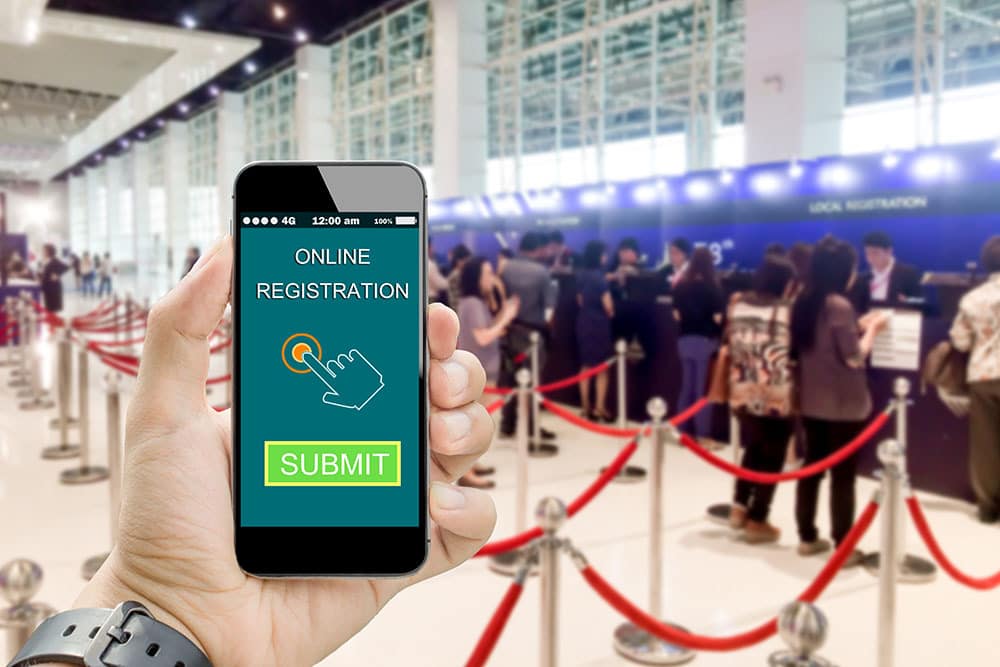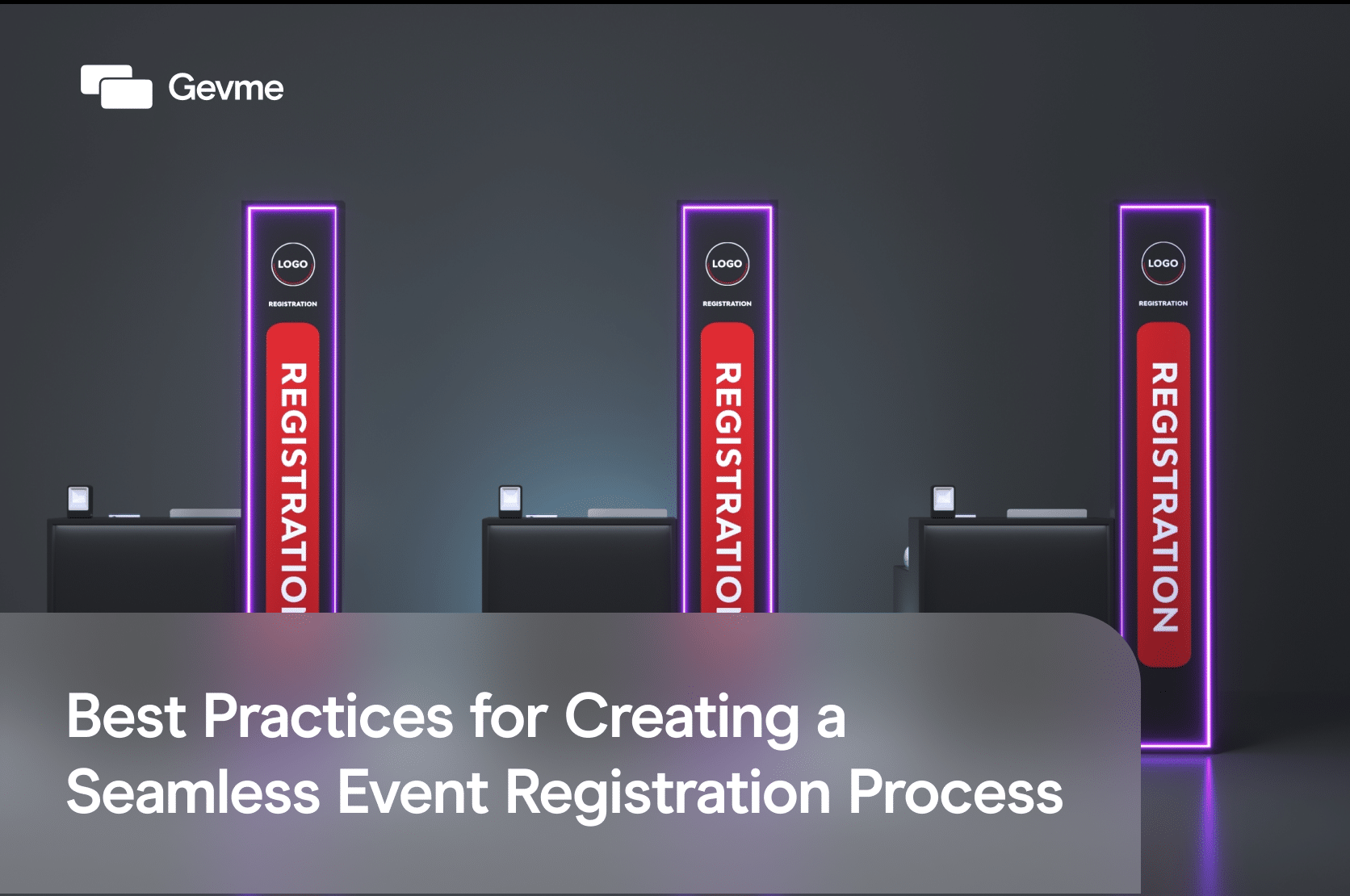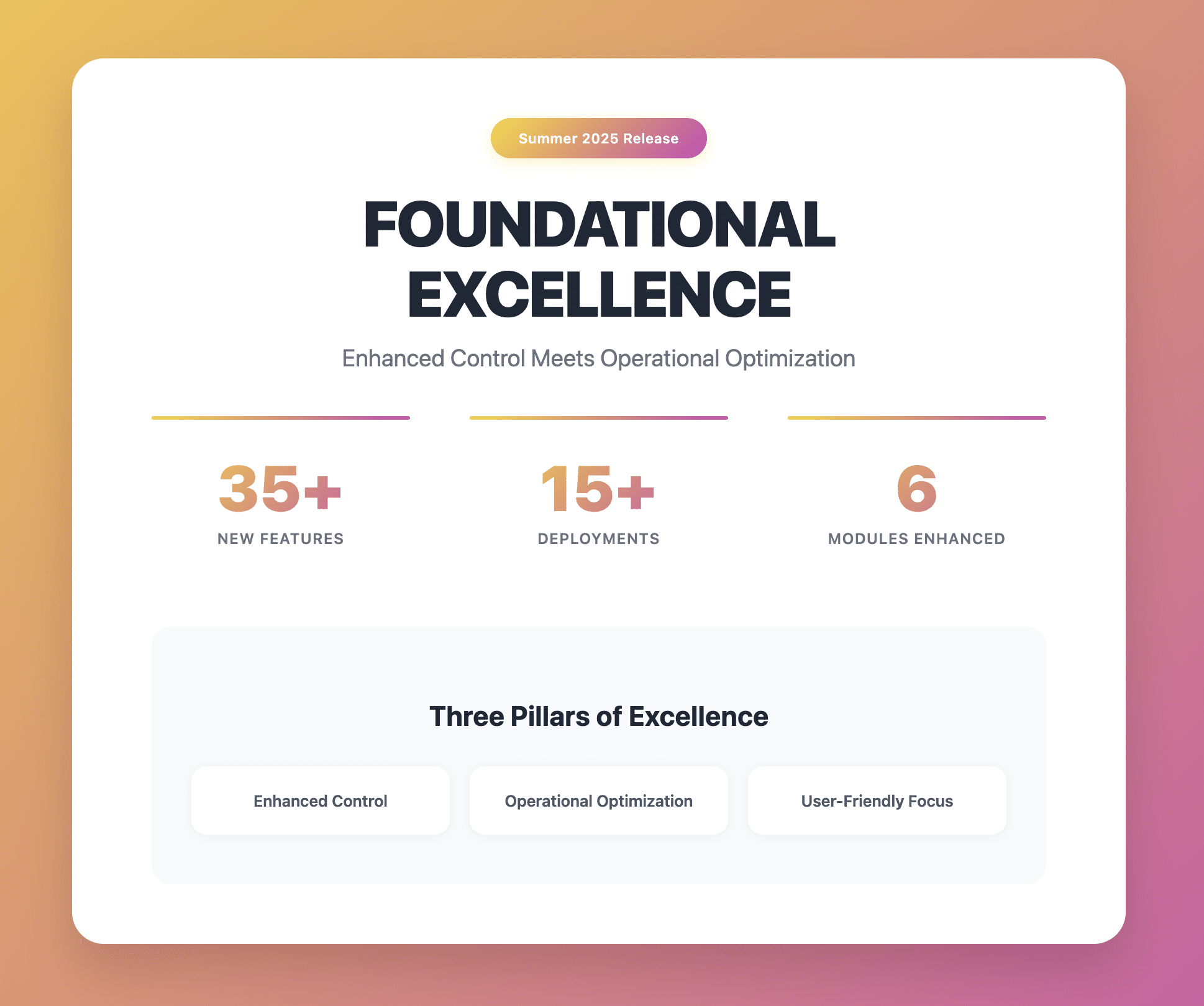The event registration process serves as the initial interaction point between you and your event attendees. Crafting a seamless and user-friendly event registration experience can leave a positive impression on attendees, boost conversion rates, and minimize dropouts. Conversely, a complicated and frustrating registration process can deter potential attendees, diminish attendance rates, and tarnish your event’s reputation. Thus, it is imperative to design and execute a registration process that prioritizes ease, efficiency, and attendee convenience.

In this blog post, we will delve into some of the best practices for creating a seamless event registration process that enhances your event.
1. Choose the Right Platform for Your Event Registration Process
The first step toward a seamless event registration process is choosing a registration platform or event registration software that aligns with your event’s specific needs and expectations. Numerous online platforms are available, but not all are suitable for your event’s type, scale, or budget. Consider several factors when selecting a platform:
- Features and functionalities, such as event website building, registration form creation, ticketing and payment integration, email marketing, attendee management, and event analytics.
- Ease of use and customization, including a user-friendly interface, templates, themes, branding options, and flexibility.
- Security and compliance measures, such as data encryption, GDPR compliance, and SSL certification.
- Pricing and scalability options, including free trials, monthly or annual subscriptions, and pay-per-use models.
- Availability of support and service resources, such as online tutorials, a knowledge base, and customer support.
Gevme, for example, is a versatile event registration software that excels in these areas and more. It empowers you to create and customize your event website, registration forms, tickets, email campaigns, attendee management, and reports. Gevme’s seamless integration with various third-party applications such as Zoom, Salesforce, and Mailchimp enhances the overall event experience. Whether you’re hosting webinars, virtual events, hybrid gatherings, conferences, or workshops, Gevme caters to a wide range of event types.

2. Design a User-Friendly and Attractive Event Website
The second step to achieving a seamless event registration process is designing an engaging and user-friendly event website. Your event website serves as the digital face of your event and should effectively convey your event’s theme, brand identity, and value proposition.
To create an appealing event website, consider the following best practices:
- Utilize a clear and captivating headline that succinctly summarizes your event’s purpose and benefits.
- Incorporate high-quality images and videos that showcase your event’s features and highlights.
- Employ concise and compelling copy to communicate your event agenda, speakers, sponsors, testimonials, and more.
- Implement clear and visible call-to-action buttons that guide attendees through the registration or ticket purchase process.
- Ensure a responsive design that adapts seamlessly to various devices and screen sizes.
- Maintain consistency in colours, fonts, and styles to align with your event’s branding.
- Include social media buttons for attendees to easily share your event within their networks.
Your event website serves as more than just an event registration hub; it represents your event’s identity and can significantly impact attendee engagement. Prioritize the design and functionality of your website to ensure a smooth user experience, as the easier it is for potential attendees to navigate and access information, the more likely they are to register.
3. Create a Simple and Intuitive Registration Form
The third step in ensuring a seamless event registration process is creating a simple and intuitive registration form that collects necessary attendee information without overwhelming them. The event registration form is the gateway to your event and should optimize the user experience and conversion rate.
To design an effective event registration form, adhere to these best practices:
- Include only essential fields relevant to your event objectives and attendee segments.
- Use clear and descriptive labels to explain the purpose of each field.
- Employ appropriate field types that match the expected input format.
- Implement validation rules to check for accuracy and completeness.
- Utilize conditional logic to display or hide fields based on previous responses.
- Provide progress indicators to show how much of the form has been completed.
- Conclude with confirmation messages that express gratitude for registration and offer further instructions.
The success of an event registration form lies in its simplicity. While gathering necessary information is crucial, avoid excessive length or complexity. If uncertain about a field’s necessity, consider whether the information can be collected at a later stage. A smooth, frictionless registration form can greatly enhance the user experience and encourage more sign-ups.
4. Integrate a Secure and Convenient Payment System
The fourth step in ensuring a seamless event registration process is integrating a secure and user-friendly payment system to handle ticket sales and donations. Your payment system represents the final step in event registration and must instil trust and satisfaction among attendees.
To achieve this, consider the following best practices:
- Utilize a reputable and reliable payment gateway capable of handling your transaction volume and currencies.
- Ensure a secure and encrypted connection to protect attendees’ personal and financial data.
- Offer multiple payment options to cater to attendee preferences and locations.
- Present transparent pricing that outlines the ticket price, taxes, fees, and other relevant details.
- Provide instant confirmation and receipts to acknowledge payments and furnish attendees with ticket information.

Security is paramount when dealing with online transactions. Ensure that the payment system you use is trusted and encrypts transaction data to protect your attendees’ sensitive information. Offering multiple payment options can also cater to a wider audience, ensuring that potential technical barriers don’t deter registrations. Transparency in pricing and prompt payment confirmations can further enhance the trust factor.
5. Implement an Effective Email Marketing Strategy
The fifth step in achieving a seamless event registration process is implementing an effective email marketing strategy that engages with attendees before, during, and after your event. Email marketing plays a pivotal role in building and maintaining relationships with your attendees, ultimately increasing your event attendance and engagement.
To make the most of your email marketing strategy, consider the following best practices:
- Use a professional and personalized email address that aligns with your event’s brand and identity.
- Craft a catchy and relevant subject line that captures attendees’ attention and interest.
- Employ clear and concise body copy that effectively conveys your message and call to action.
- Design attractive and responsive emails to enhance appearance and readability.
- Utilize segmentation and personalization to tailor email content and tone to attendees’ characteristics and behaviours.
- Implement automation and scheduling to send emails at optimal times and frequencies.
- Leverage tracking and analytics to measure email performance and effectiveness.
Email communication is an essential tool in pre-event and post-event engagement. Tailoring your emails to segments of your audience can make your communication more effective and personal. Use analytics to measure the performance of your email campaigns, and iterate based on the insights. An email that resonates with its recipient can significantly boost attendance and overall event satisfaction.
6. Provide a Seamless Check-In Experience
The sixth step in ensuring a seamless event registration process is to offer a smooth check-in experience for attendees on the event day. Your check-in process represents attendees’ first on-site impression of your event, and it should be designed to prioritize convenience and satisfaction.
To achieve this, consider these best practices:
- Implement a fast and straightforward check-in method that minimizes wait times and queues.
- Utilize a mobile or web-based check-in app that scans QR codes or barcodes from tickets or confirmation emails.
- Offer self-service kiosks or tablets that allow attendees to check in themselves using their name or email.
- Utilize a badge printer to produce name tags or badges for attendees on the spot.
- Ensure staff or volunteers warmly greet attendees and assist with any inquiries or issues.

The check-in experience sets the tone for the entire event. Advancements in technology provide numerous methods to expedite this process, from mobile apps for quick ticket scanning to self-service kiosks. Having a friendly staff presence during check-in can also provide a personal touch, assisting attendees with any last-minute queries or issues.
7. Collect and Analyze Feedback from Your Attendees
Another step in achieving a seamless event registration process is the collection and analysis of feedback from attendees after the event. Gathering and evaluating feedback represent the final stage in your event registration process and serve to gauge the event’s success and impact.
To effectively collect and analyze feedback, consider these best practices:
- Employ a straightforward and relevant feedback form that addresses crucial aspects, including event objectives, content, delivery, satisfaction, and more.
- Incorporate a mix of quantitative and qualitative questions to capture both numerical and textual feedback from attendees.
- Utilize a rating scale that enables attendees to express their agreement or satisfaction levels regarding various aspects of the event.
- Include open-ended questions that allow attendees to share comments, suggestions, testimonials, or additional feedback.
- Offer incentives or rewards to motivate attendees to complete the feedback form.
- Use a timely and appropriate communication channel that reaches out to your attendees soon after the event.
- Employ a data analysis tool to process and visualize feedback data, generating insights and recommendations for event improvement.
Incorporating attendee feedback into your event planning process is the key to continuous improvement. By actively seeking and valuing the opinions of your attendees, you not only enhance the event registration process but also refine the overall event experience. The insights gained from feedback can guide future event strategies, ensuring that each iteration becomes even more seamless and engaging.
8. Foster a Community and Networking Environment
Beyond the content and registration process, your event can provide immense value by fostering a sense of community and networking opportunities. Attendees often seek not only knowledge but also connections with peers and industry professionals. Here’s how you can create a thriving community within your event:
- Pre-Event Networking Sessions: Host virtual or in-person pre-event networking sessions or forums where attendees can introduce themselves, exchange ideas, and discuss common interests.
- Interactive Elements: Incorporate interactive elements such as Q&A sessions, discussion boards, or virtual lounges within your event platform to encourage attendee engagement and interaction.
- Attendee-to-Attendee Connections: Enable attendees to connect through attendee profiles, contact-sharing features, and dedicated networking areas.
- Attendee-Led Meetups: Encourage attendees to organize and lead meetups, roundtable discussions, or special interest groups related to your event’s theme.
- Social Sharing: Encourage attendees to share their event experiences, insights, and takeaways on social media platforms, using event-specific hashtags. This not only promotes your event but also creates a sense of belonging to a larger community.

By highlighting the networking and community-building aspects of your event, you attract registrants who see the value not only in the content you offer but also in the opportunity to connect and collaborate with like-minded individuals.
9. Plan for Contingencies and Support
Lastly, it’s essential to emphasize your commitment to planning for contingencies and providing reliable support throughout the registration process and the event itself. Preparedness for unexpected situations can reassure potential registrants that they will have a smooth experience, even if issues arise. Here are some of the best practices for contingency planning and support:
- Technical Backup Plans: Have a backup plan for technical issues that may arise during registration or the event, such as server crashes or connectivity problems.
- Dedicated Support Channel: Offer a dedicated support channel, such as a helpline or live chat, to assist registrants with any difficulties they encounter, ensuring timely assistance.
- Proactive Communication: Communicate proactively with registrants about any changes or updates to the event schedule, format, or logistics, helping them stay informed and prepared.
- Staff Training: Train your event staff or volunteers to handle unforeseen challenges calmly and efficiently, ensuring that they can provide guidance and assistance when needed.
- Crisis Communication Plan: Maintain a comprehensive crisis communication plan in case of emergencies or disruptions, outlining the steps to take to keep registrants informed and safe.
Highlighting your commitment to providing reliable support and preparedness for unexpected situations can instil confidence in potential registrants, assuring them that they will have a smooth experience from registration to the event itself.
Conclusion
A smooth registration process is a critical component of any successful event. It serves as attendees’ initial experience with the event, and a positive impression here can set a favourable tone for the entire occasion. By prioritizing user-friendliness, security, and effective communication, you can ensure your registration process enhances, rather than detracts from, the overall event experience.
By adhering to the practices outlined above and leveraging the best event registration software, such as Gevme, you can create a seamless registration process for your events. To learn more about Gevme or explore its capabilities, visit Gevme website or request a free trial or demo.








